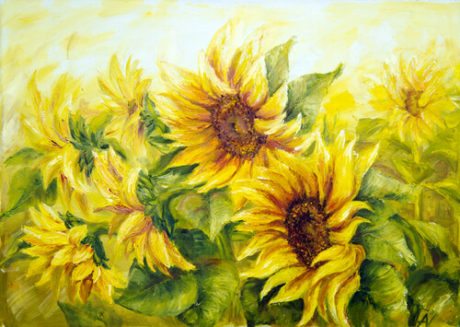 Oil Painting is a fairly new form of art. It is the process of painting with the use of pigments that are bound together with a medium of drying oil, particularly in early modern Europe, the linseed oil. This usage of oil in combination with other pigments to do painting counts back to 1400. There have been many variations in the art form of oil painting from that era to today’s date. But the basics remain the same.
Oil Painting is a fairly new form of art. It is the process of painting with the use of pigments that are bound together with a medium of drying oil, particularly in early modern Europe, the linseed oil. This usage of oil in combination with other pigments to do painting counts back to 1400. There have been many variations in the art form of oil painting from that era to today’s date. But the basics remain the same.
In Europe, the fifteenth century was considered as the transitional period. It was at this time, that some scope of reality was visualised in art forms. Art was undergoing a huge transformation from the ornamental and mythological style of the middle age, to a period of rebirth and revival. This also marked the beginning of Renaissance.
There grew a sense of realisation among the artists, who began to understand the mathematical laws and this led to a bunch of budding artists who were keen in portraying sincere and realistic things in nature. These artists initiated the use of ‘nature’ as an inspirational source for their paintings.
Story of Invention
It was at this time when Jan Van Eyck (1395-1441), a northern renaissance painter wished to portray nature in detail in his paintings. He wanted to bring forth every bit of scenic beauty to the canvas through his painting brush. Painting nature in a way that it looks scenic and lively was not an easy task. But, Van Eyck was determined to depict nature in its true self in his paintings.
It is said that ‘necessity is the mother of invention’. Jan Van Eyck soon realised that if he needs to accomplish his desire to paint nature’s beauty in detail on his canvas then he would have to bring some improvements in the technique of painting. This zeal drove him to discover a type of paint that can bring liveliness to the canvas. And Van Eyck became the inventor of oil painting.
In the early years, Van Eyck and other oil painters did not purchase ready made colours. They usually got the pigment from the natural sources such as plants and minerals. They also added a binder to it to form a paste that would allow them to paint. Initially, the binder used was egg, and the resultant end product was tempera paint, which had the tendency to dry very quickly. This quick drying property did not allow smooth transitions while shading. But smooth transitions were essential to achieve the effect of reality that Van Eyck attempted to portray. Therefore, Van Eyck initiated the use of oil instead of egg. Oil worked as a perfect binder and it gave results to the satisfaction level. Oil, when used as a binder, had several benefits. Besides having a slow drying time, it also lends a glossier look to the painting. With oil painting, an artist can apply even the tiniest detailing on the canvas with the help of the brushes.
Since the era of Jan Van Eyck to today, there have been several changes in style and medium used for oil painting. In the next chapter, I will tell you about the different forms of oil painting mediums that are now available to present day’s oil painters.





-
Add a note